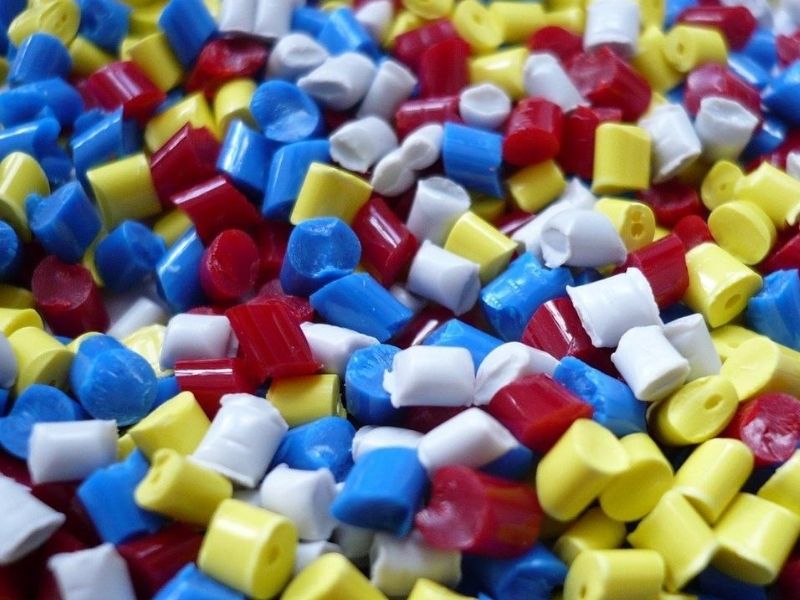 By Claudia Amos, Technical Director – Plastics Technology, Waste Infrastructure & Commercial Due Diligence at Anthesis Group
By Claudia Amos, Technical Director – Plastics Technology, Waste Infrastructure & Commercial Due Diligence at Anthesis Group
Plastic polymers comprise about 40% of the output of the global chemical recycling sector1. As we use and make plastic today, for each kilogram that is not reused or recycled, another kilogram is produced from non-renewable, fossil-based raw materials.
Recycling today
Recycling of plastics waste into new plastics is an approach to increase the circularity of supply chains. According to the ‘Accelerating circular supply chains for plastics’ report by Closed Loop Partners, the demand for recycled plastics is strong, however the current supply of recycled plastics meets just 6% of this demand.
Currently, the predominant method of plastics recycling is mechanical recycling, which can process clean and separated streams of mainly clear rigid plastics materials. There is potential to increase capacity for mechanical recycling by improving collection, sorting/separation, and plastics cleaning infrastructure. However, because of the associated costs of collection and preparation, there is a limit to the level of supply that can be achieved from these facilities. Due to the quality of materials required for input, many mechanical recycling facilities are only able to process around 60 – 70% of their input stream, with the residues going to energy from waste or landfill.
Advanced recycling of the future
For the large volumes of plastics waste that is not suitable for mechanical recycling, so-called chemical reprocessing or advanced plastics recycling technologies provide another option. These processes target the residues of mechanical recycling including mixed plastics and textiles, flexible plastics and film, as well as difficult to recycle plastics like PP, PUR, PA etc. This gives us new opportunities to recycle more plastic wastes and put less pressure on collection systems and sorting infrastructure.
As the diagram shows, these processes range from purification, which acts in a similar way to mechanical or material recycling, to decomposition (desolvation/depolymerisation), which breaks it down into monomers and waxes, to conversion, which fully breaks down the polymer chains using pyrolysis and gasification processes into methanol/ethanol or hydrocarbons, like oils and naphtha replacements.


The challenges of chemical recycling
Like many new waste management technologies, chemical reprocessing or advanced recycling also comes with challenges that need to be addressed throughout the supply chain.
There are economic disparities between virgin and recycled production, which is partly due to the lack of consistent support for plastics recycling as well as existing policies and regulations that hinder the development of circular economy practices e.g. support for renewable fuels.
The current lack of understanding and communication across the plastics supply chain, in particular, between the virgin supply chain, the waste management industry and technology providers make it hard to identify efficient circular solutions.
Un-priced and unmitigated externalities, which do not consider the costs of natural resources make it hard to evidence the reduced environmental impact and the circularity benefits for these processes. In addition, there is a lack of independent evidence, accepted product standards and process definitions to compare recycled plastics against virgin products and to compare the various technologies and processes.
Many of these new technologies are at pilot and early commercial stages to date and will require some time to be fully commercialised. These are looking for additional funding to be available at larger scale, globally across geographies and for a wider range of inputs. This will create economies of scale and is expected to make them more competitive in the marketplace.
Due to the small scale and novelty of these processes, there is currently a lack of integration into existing collection systems and waste management infrastructure. In addition, for some recycling options there is a need to develop new and innovative logistics infrastructure to increase the collection and preparation of plastics waste for advanced recycling.
Detailed and globally accepted recycling process and product classifications are a good first step to identify the circularity potential of chemical reprocessing and advanced recycling to help. It is also crucial for more advanced design and sustainable sourcing to allow for the increased use of recycled polymers in the supply chain.
Collective action is needed to build technologies that transform plastic waste to value. To build a circular supply chain for plastics, we must consider technologies such as chemical re-processing or advanced recycling and educate and increase awareness of these options when evaluating replacement options for plastics products and packaging. By adopting shared terminology and communicating the benefits and costs of these options to a wider audience, we might inspire further collaboration to produce circular plastics supply chains in the future.
For more information on this topic, click here.
[1] Levi, P.G., Cullen, J.M., 2018 Mapping Global Flows of Chemicals: From Fossil Fuel Feedstocks to Chemical Products Environmental Science & Technology 2018 52 (4), 1725-1734
This expert view is part of BMI’s spotlight week on chemical recycling. Guest posts do not necessarily reflect the views of Bio Market Insights’ editorial team and management.
 If you were interested in this bioeconomy story, you may also be interested in the ones below.
If you were interested in this bioeconomy story, you may also be interested in the ones below.
Read: Chemical recycling: the missing link in a closed and integrated value chain
Read: The future of chemical recycling in tackling plastic waste
Read: Chemical recycling or recovery? The circular economy hangs in the balance
Read: Spotlight on chemical recycling: Offering a solution towards a circular economy
Read: Ineos Styrolution and Agilyx advance US chemical recycling facility.
Read: Braskem starts trials on chemical recycling of plastic waste.





